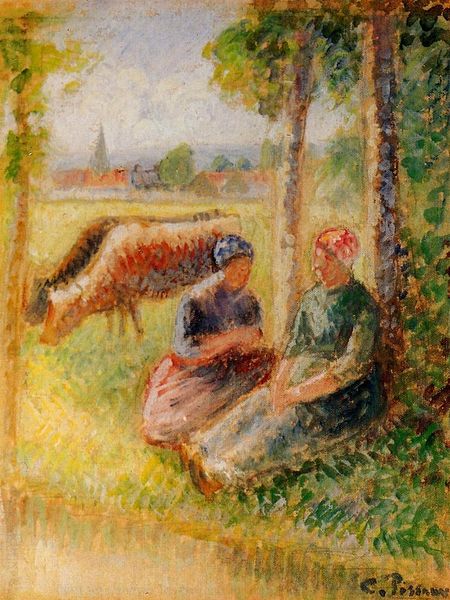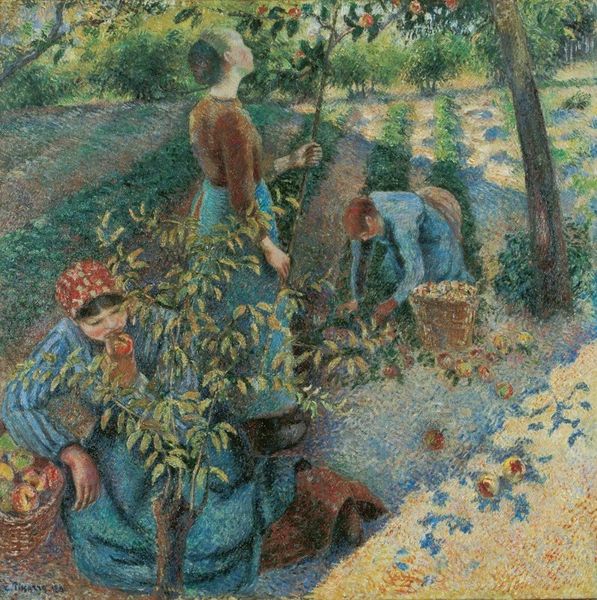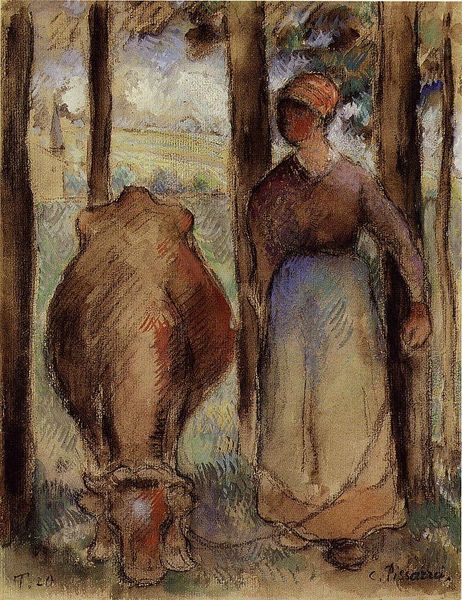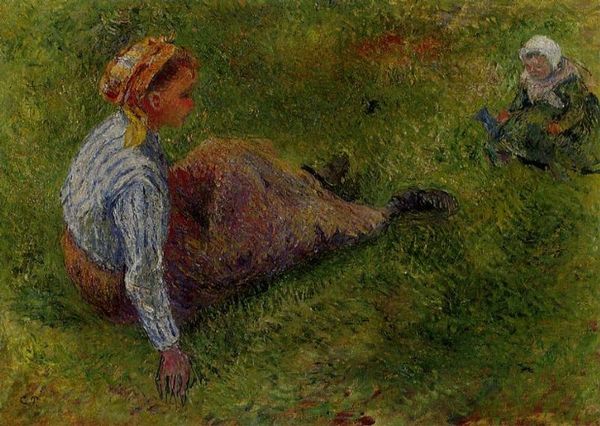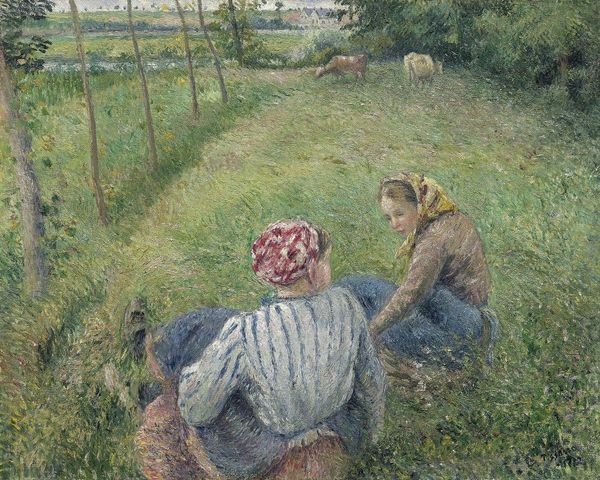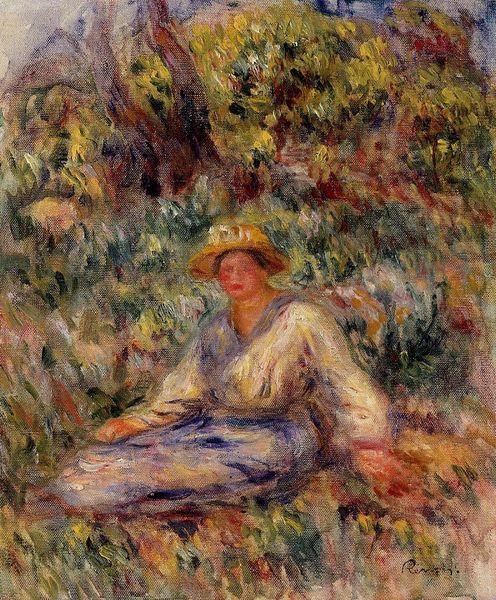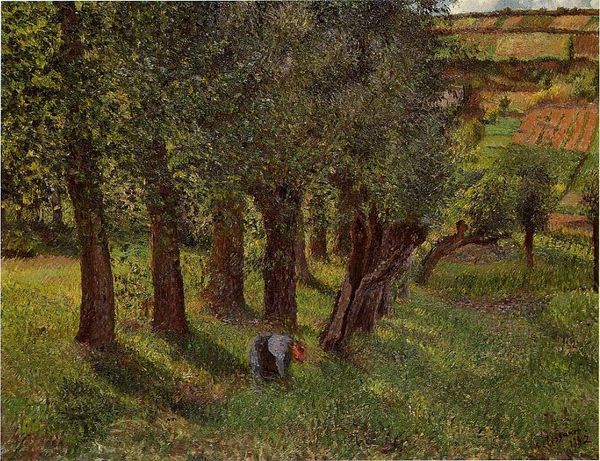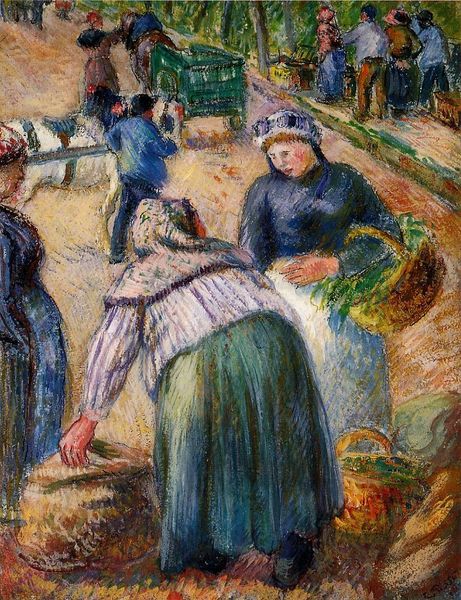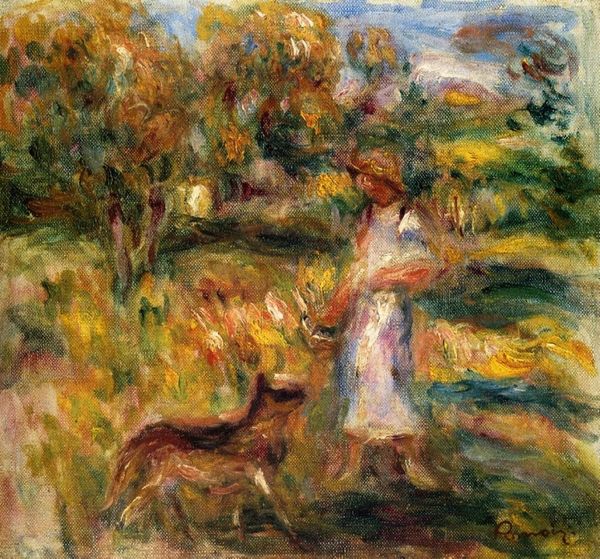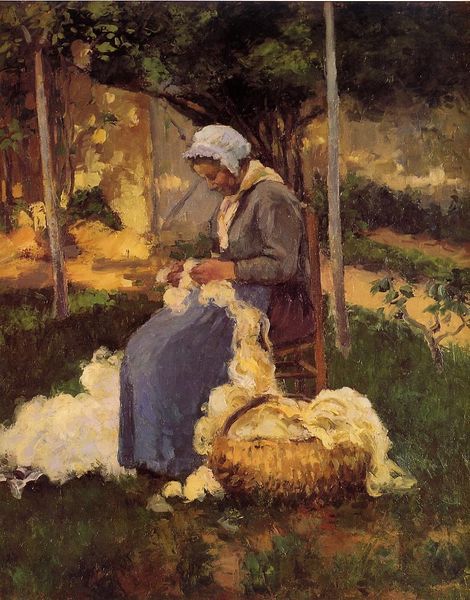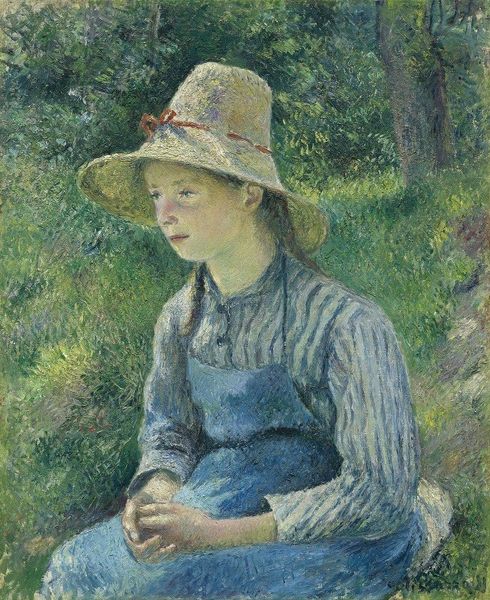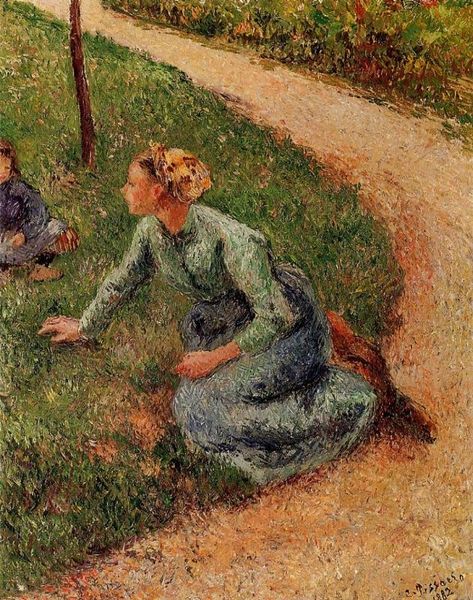
plein-air, oil-paint
#
impressionism
#
plein-air
#
oil-paint
#
landscape
#
impressionist landscape
#
figuration
#
oil painting
#
genre-painting
Copyright: Public domain
Editor: So, here we have Camille Pissarro’s “Cowherd,” created in 1883 using oil paint, and done *en plein air*. It’s interesting how the figures blend into the landscape, and how muted and earthen the palette is, but still distinctively impressionistic with those visible brushstrokes. What jumps out to you when you look at the formal aspects of this piece? Curator: I’m immediately drawn to the surface texture and the materiality of the paint. Pissarro has created a visually tactile experience through his application of pigment. Note the impasto, the visible build-up of paint, especially in the foreground grass. How does this texturality affect your reading of the work? Editor: I guess it emphasizes the physicality of the scene – the feel of the grass, the roughness of the figures' clothes… it all feels very present, not idealized at all. What do you make of the composition, how the figures are arranged? Curator: Consider how the figures are positioned in relation to one another and to the background. The repetition of verticals created by the tree trunks, punctuated by the two seated figures, provides a visual rhythm. Do you notice any compositional echoes or contrasting elements? Editor: I see what you mean. The tree trunks are echoed by the verticality of the standing figure behind. And, yes, the contrasting element seems to be in the juxtaposition of the darker foreground against the brighter buildings. It kind of flattens the picture plane. Curator: Precisely! That flattening, alongside the use of color, creates depth, defying academic painting styles that prioritize three-dimensionality. It invites us to contemplate the painted surface itself, rather than being merely a window onto a scene. Ultimately, through close looking, we uncover how Pissarro uses color and texture as integral elements, structuring meaning beyond the depicted narrative. Editor: That's interesting; it does push me to consider the painting more as a constructed object rather than just a depiction of reality. Thanks for pointing those elements out.
Comments
No comments
Be the first to comment and join the conversation on the ultimate creative platform.
